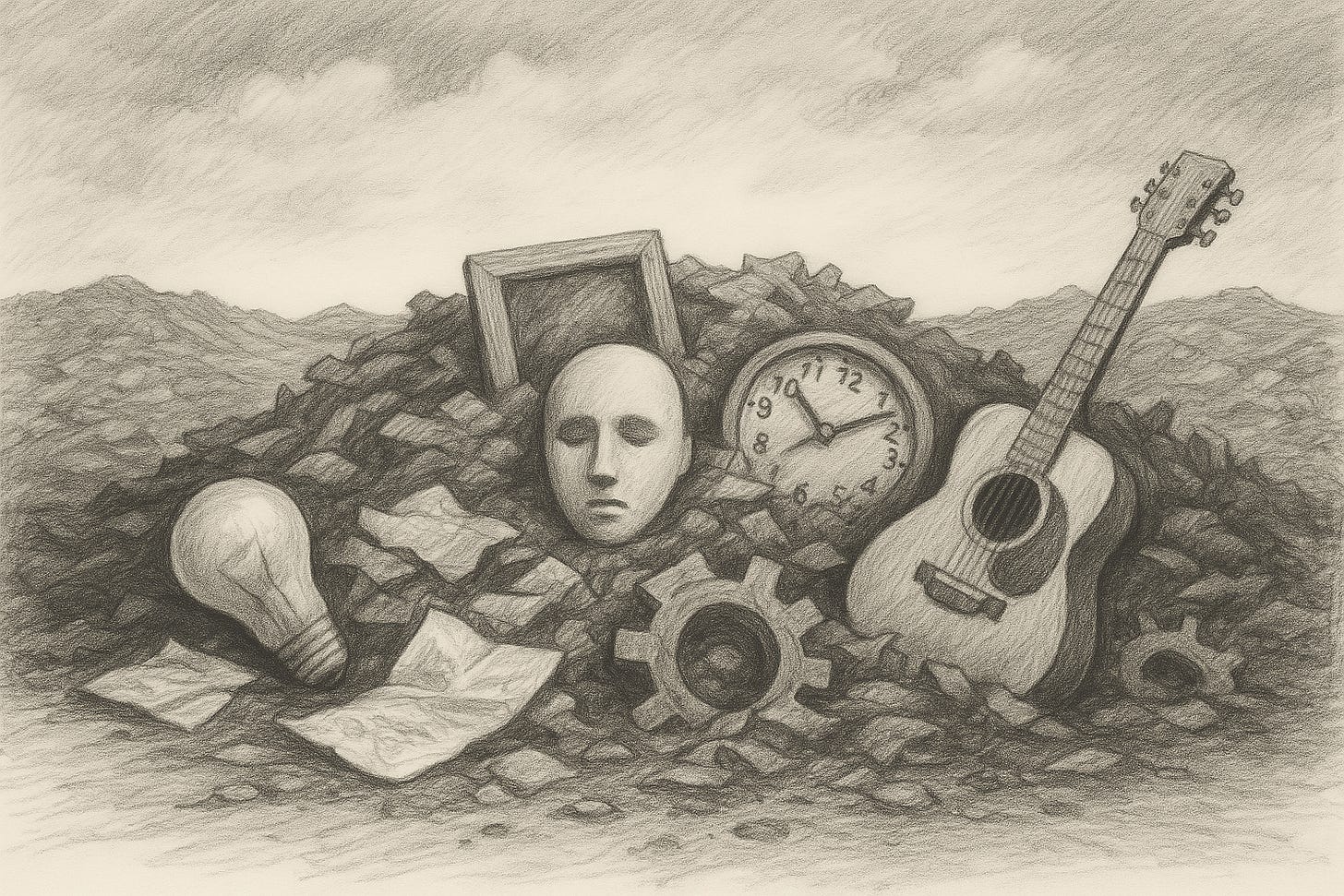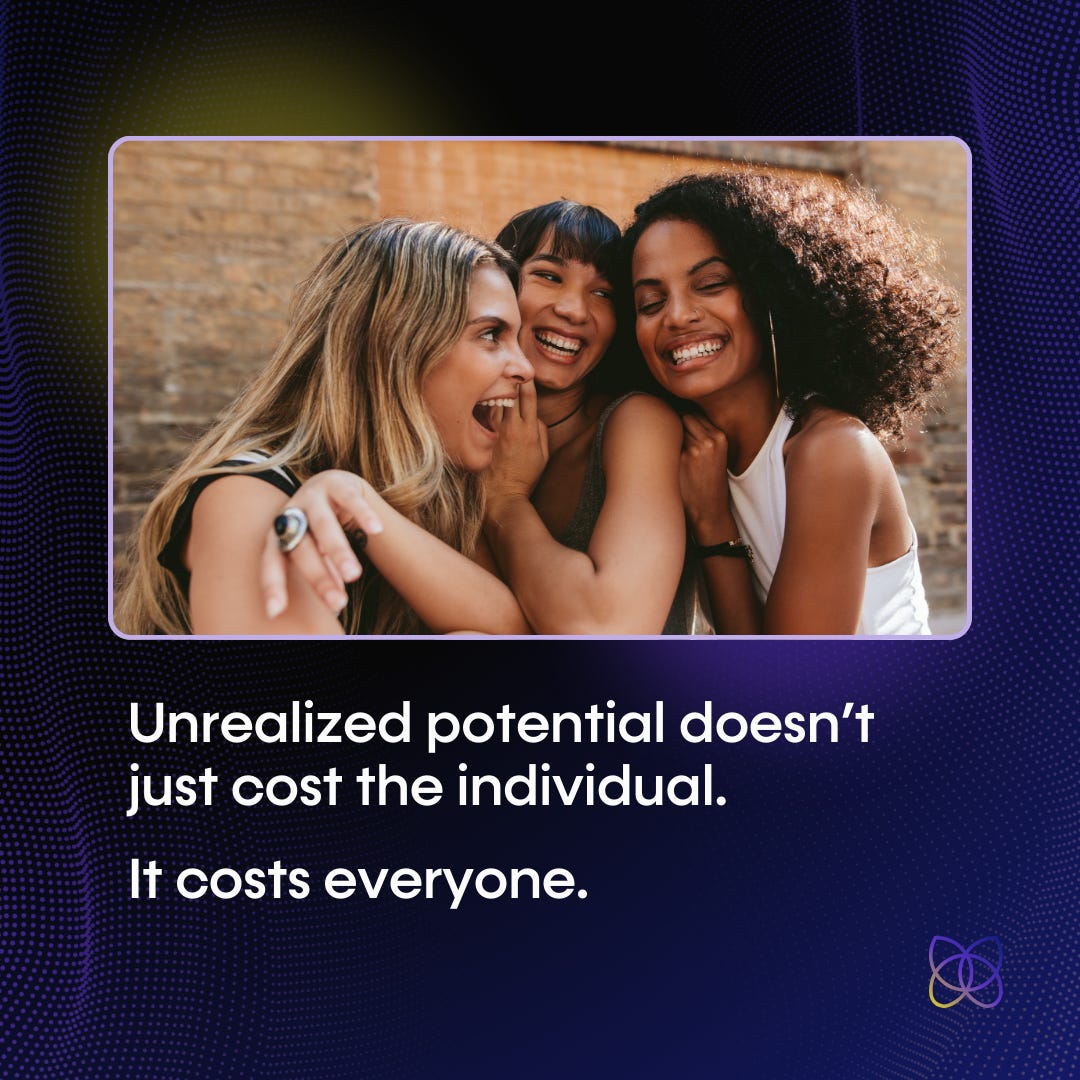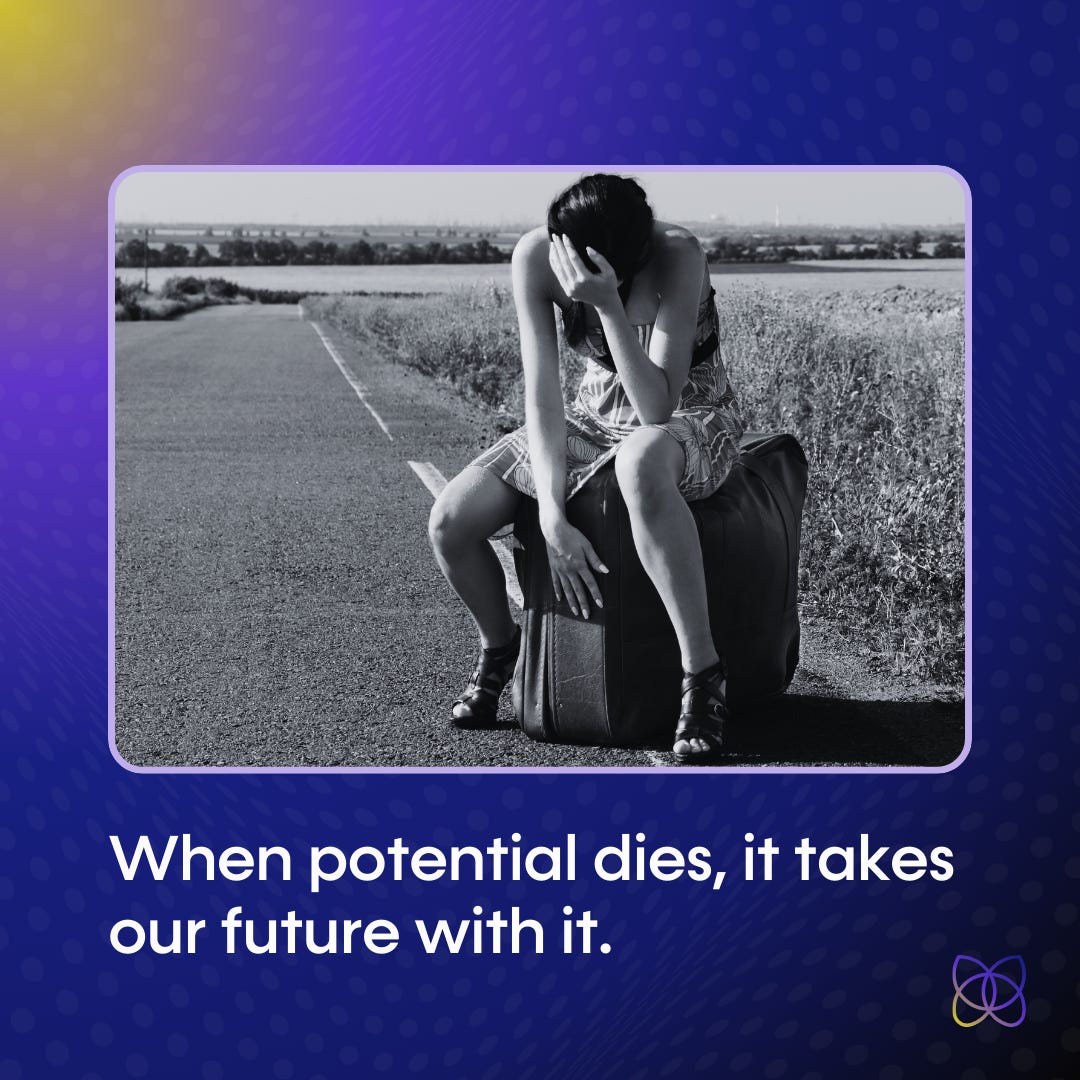The invisible crisis
We talk about war, climate change, inequality, burnout, and polarization like they’re separate issues. They’re not. They’re just more visible symptoms of a deeper, more foundational failure:
The systematic waste of human potential.
It’s not that we lack the intelligence or innovation to solve our biggest challenges. It’s that we’ve failed to unlock the people who could.
Somewhere right now, a cure for Alzheimer's sits dormant in the mind of someone who may never get the chance to pursue it.
A brilliant engineer too exhausted to imagine anything new, wastes away in a soul-crushing job.
A burned-out teacher who could've transformed education ponders her mental state, not her ideas.
The next Einstein is stuck in a service job just to make rent—her best ideas buried in survival mode.
This isn't speculation. It's math.
According to Gallup, workplace disengagement costs the global economy $7.8 trillion annually—almost 10% of global GDP.
These are the bare-minimum workers doing just enough to stay employed.
We say things like "everyone has potential," but we don't act like it. We certainly don't design for it.
We tell kids, “You’re special,” and tell adults, “Get real.”
We've accepted a world where the vast majority of human capacity—creativity, insight, energy, and care—goes untapped or unseen.
But just because something is invisible doesn't mean it's harmless.
Viruses are invisible, too—same with toxic gases. And like them, unrealized potential doesn’t just disappear—it spreads quietly, weakening everything it touches.
Wasted potential compounds in reverse—and everyone pays the tax.
We all absorb the cost of the innovation that never came. The leader who gave up. The quiet crisis became policy and business-as-usual—because no one solved it first.
But how?
How what didn't happen still hurts
How do you measure what never came to be? How is it possible?
Do you know how many vaccines weren't discovered?
Or how many movements weren't championed?
How many films were never written?
What about how many connections weren't made—simply because someone wasn’t confident enough to say, “Hi.”?
You can't point to an "unwritten book" or an "unsaid apology" and find the concrete damage that was done. But the world somehow still feels the weight of their absence.
And its invisible damage spreads everywhere—in homes, in classrooms, in companies, and in our communities.
Reflection:
Have you ever had an idea or impulse—something you knew had potential—but let it go?
What would need to change for that potential to be realized?What’s your ceiling? Floor?
J.K. Rowling wrote Harry Potter on uncomfortable trains and in cafés, with a baby in tow. No AI. No fancy tools. Just struggle, story, and sheer will to get it done.
That story grew into a franchise that's generated over $35 billion in economic value—and altered an entire generation’s imagination in the process.
We’ll call that her ceiling of potential.
But what about her floor? How close did that story come to disappearing forever—just a scribbled draft left in a drawer?
Remember, 12 publishers rejected her first draft of The Sorcerer’s Stone*.
(*her original draft was initially called The Philosopher’s Stone).
If that's her potential under imperfect conditions, then what's inside you? What about others you care about? Their families and friends, and so on?
Most of us will never reach our maximum potential—we don’t need to. But far too many of us never even reach our floor.
We might be trapped by our own narratives.
Potential is like a story
If Rowling’s life represents what actualized potential looks like, most people’s lives wait for their inciting incident or great challenge to show up.
Their story isn’t boring because it’s quiet.
It’s boring because it’s paused.
Perhaps the structure is there. The conflict is known.
But the main character never tackles it, never struggles through it.
So, nothing happens.
No transformation. No revelation.
Just a life spent waiting for something—anything—to happen.
Let me be clear. This isn’t about showing off. Or becoming some mythic hero—though it’s not impossible.
It’s about being sufficiently, profoundly entertained by your own story—not for others, but for yourself.
And that kind of story doesn’t come from comfort. It comes from movement. Tension. Curiosity. It comes from the decision to struggle and grow.
But when that story stalls?
The consequences don’t stay contained.
Most people don’t realize that:
Unrealized potential doesn’t just cost the individual. It costs everyone.
One person, one ecosystem
Unrealized potential isn't just an individual tragedy. It's an ecosystemic breakdown.
Imagine Mia. She's curious, creative, and deeply empathetic. She almost quits during her first year of teaching, but decides to stay because one student—Jordan—tells her she's the first person who's ever listened to him.
So Mia stays. She tailors some curriculum for Jordan. She starts a literacy nonprofit 15 years later. The nonprofit helps thousands of students—some of whom become teachers themselves.
But what if Mia quit teaching? What if Jordan had stayed invisible? It’s more common than you think.
But the point is this: potential is never isolated. It's ecosystemic. When one person grows, entire systems evolve. When one person stays stuck, those same systems stagnate.
This is why unrealized or wasted potential hurts so much.
Because it never stops with one person.
It ripples outward—through families, communities, organizations, and cultures.
Unrealized potential turns into poverty. It becomes greed. It manifests as unchecked power, violence, or resignation. It turns into policies built for fear instead of possibility. And ultimately into systems that shrink instead of grow.
One person’s collapse triggers a chain reaction:
A dropout becomes a parent under strain,
whose stress affects their child’s health and learning,
whose teacher becomes overwhelmed,
whose district loses funding,
whose city sees rising crime,
whose leadership enacts harsher punishment instead of deeper understanding.
Tragically, this chain of events, seen in every major city in the US, started with someone’s potential—left unrecognized, unsupported, or simply ignored.
The workplace is no different.
In every team, a disengaged member doesn’t just do less—they signal to others that less is possible. This creates drag. Ideas remain bottled up. Emotional distance continues to grow. When someone is stuck at their floor, the group unconsciously adapts around it.
Engagement has a floor. And a ceiling. And when most people are stuck near the floor, the entire ecosystem suffers.
Quick thought:
I once worked as a counselor in youth detention. One day I was walking out of court with a client, and the officer said, “Stay out of trouble—you’ve got a lot of potential.”
And my first thought was: “Doesn't everyone?”
But we don’t talk about it that way, do we?
“Potential” becomes a trite phrase for young people. But what about your potential? Mine? Everyone's?
Is it gone after 25? 35? 55?The thought that should haunt us
There are billions of humans on this planet—many with untapped capacity, unused capabilities, and dormant value. Yes?
And… our world is filled with even more scarcity, corruption, and disease—not less.
Is there a link? An obvious connection?
I’m asking: What if our biggest crises—war, inequality, climate stagnation, cultural division—persist not because we lack solutions but because we've failed to unlock the people who could solve them?
What if the minds we need are already where we need them to be... and just haven't been activated?
Isn’t that tragic? Even dangerous? And it's time to call it out.
That’s why potential is both humanity's greatest crisis—and its biggest opportunity.
Because potential isn't just another resource—
it's the only one that multiplies the more we invest in it.
Unlike oil, land, or capital, potential grows exponentially when activated.
It creates more of itself and spreads generously.
Which means unlocking it isn't just the right thing to do—
it's the single most leveraged investment we could make as a species.
Coming next
I’ve named the crisis but only scratched the surface of its true cost.
Because Potential doesn’t just fade quietly when ignored—it pulls entire futures down with it. It delays breakthroughs, silences voices, reroutes relationships and discoveries that could have reshaped everything.
In post 1-2, we’ll look more closely at what we lose when potential is left dormant:
Economic drag
Innovation gaps
Cultural stagnation
Emotional pain
But more than that, we’ll explore the idea that unrealized potential doesn’t just cost us today—it diminishes the future we’re capable of building.







